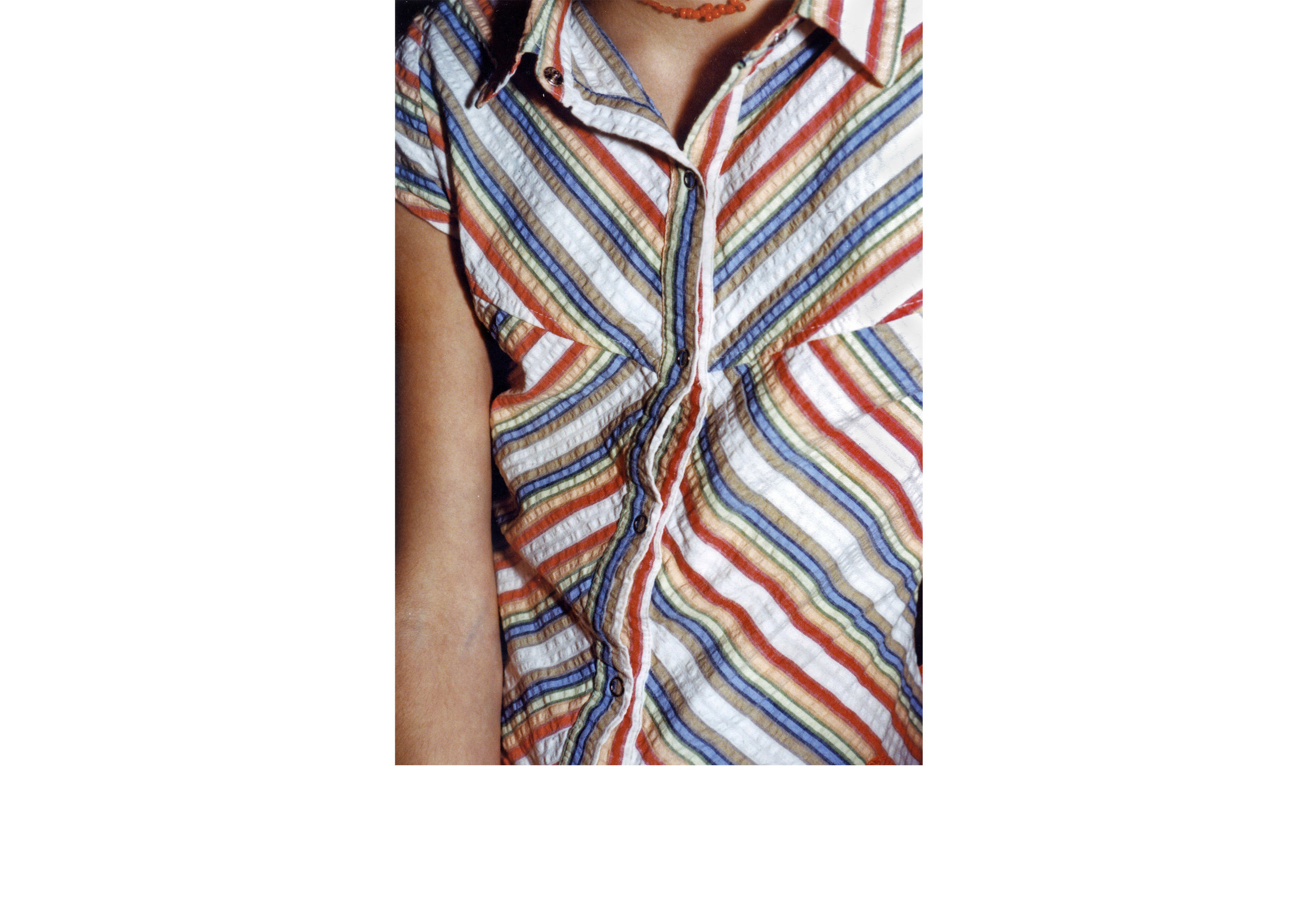An Aesthetics of Affection
A great work of photography generates a strange tension between silence and a desire for words to describe it. What happens, then, when it comes to writing about these photographs? As writing, at times, becomes a vain exercise, in the sense that words and images speak in different ways; nothing I could put into words would enable a reader to imagine what Florencia Blanco's photographs are like.
So, I try to imagine how I would describe these photographs to somebody not able to see them. And I return to that original silence of images, to that tension, and to those bits of information suggested by the author. Aproximación is a group of photographs, taken in 2004 and 2005, focused on proximity, on those nearest and dearest to the photographer. Her intimate circle is there, Susana, Rosana, Ivana, Patricia, Agustina, Victoria, Josefina, Graciela, Pina, Regina, Ana, Lucila and Yuquita.
And, of each one, a bit is displayed: A torso, the hand, the back.
The first impression would lead us to think of what in art is called synecdoche, that is, suggesting the part for the whole, as a procedure that invites us to imagine the rest, to imagine what is left out of the picture. However, as we know that the mundane view is utilitarian and that the photographs, in fact, are there to question us about our relationship to objects, living beings and ourselves, we can override that first impression. Then, it is not longer about the part and the whole, but rather it is a procedure that Blanco has used in this and in previous works such as Salteños (1997-2001), where she conceives and portrays an aesthetics of affection. The challenge of her photographs is that of putting into images the relationships between time, space and affection from a new perspective of order and organization. She shows us her intimacy but without gloating over it. She enables us, for an instant, to be a part of that close circle of intimacy while, at the same time, she touches us off to our own relationships with mothers, sisters, friends or daughters. She encourages us to reflect on our own selves, our place in the world and our ways of relating to others.
Florencia Blanco’s photographs lead us to a new experience of time, to a moment of stillness and observation. Here, it is not about taking a magnifying glass and enlarging the detail, but rather about taking a deep look. The photographer captures and conveys proximity through the choices and decisions made in her work; reducing the elements that compose the image to a minimum; enabling us to appreciate even the texture of the models’ skin and of the fabrics with which clothes are made; and then recomposing them, in the final photograph, to their natural size and grace. The use of color enhances this relationship with the portrayed subjects, their naturalness.
The use of natural scale is not a minor detail: she thereby restores her women to their actual body size and demeanor.
To photograph is to be simultaneously close and apart; it is to experience the space and the people we relate to through an unsurmountable separation. We unfold into the fantasy of a single body that would embrace all those affections.
Florencia Blanco is pointing to us and to herself in this still gesture. She seeks, in these other bodies, her own body, while proposing a leap into the existential void, into our passing through this world.
Julio Fuks, September 2008.
















